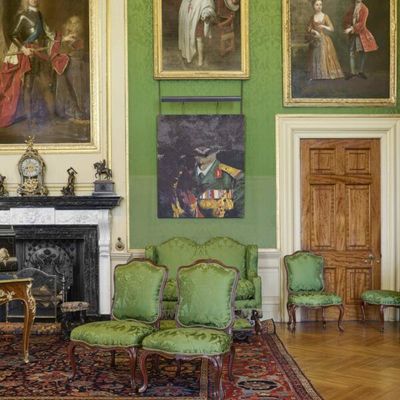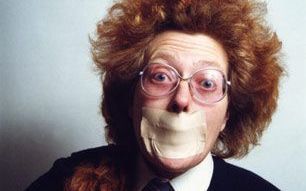GOING to the slightly bigger island beside us, the island that I went to art college in and spent nearly seven years in, including a number of months in the Midlands, I wondered what became of that young woman if she had stayed there? The public vote is shared with the jury
How easier her life might have been, what events would she or would she not have instigated? Coventry is pretty easy to get to – £51 return flight Belfast to Birmingham, free skytrain to the train station and a £3.60 train ride to the city itself. Straight out of the train station is a newly-built kiosk for visitors especially for its designation as he UK Capital of Culture, where some of the confusion around the www.visitcoventry.co.uk website can be sorted out.
As is usual with these cultural designations, it gives the city an opportunity to revisit its cultural offering and rejig things a bit. Coventry is a medieval city that was badly flattened in the Blitz, the most catastrophic raid taking place on November 14, 1940, “The most concentrated attack on a British city in the Second World War.” It has a weird combination of seventies buildings, medieval wooden frame houses and really hospitable people – and is easy to walk around.
The reason for the visit was to see the Array Collectives submission for the Turner prize at the Herbert Gallery. Having looked at coverage so far, like all art you really have to see it to get something personal from it. I'm not sure the English papers coverage really get it. I went expecting something and got something else entirely. I walked into the space, ignoring the empty flagpoles, to the yurt-like structure which houses the sibín described as a “pub without permission’.
As I walked in and sat down on the seats around the edges it was full of bewildered English people wondering what was going on. In one corner archive footage from Northern Ireland, in another a bar, familiar items from North and South of Ireland: Tayto crisps, fake fag butts laid out on cabaret tables from the Black box. The snugs all felt very familar, Stephen MIllar's painting behind the bar, visual gags about “themmuns”, beer mats and costumes that have featured in some of their activist work.

On walking in to the familar space there is a three-screen digital piece on the wall that everyone was glued to. I arrived when the video piece was talking about the faeries and the Presbyterian Church. Okay, so were they talking about the Little People or the Village People, I thought? It became clear on watching it the second time that the faerie people of faith segment was referring to how gay people have been treated by faith communities: “The fairies and the fallen angels, not the mainstream Christian religions that lived in peace during the Troubles” among other snippets of how gay Christians met and received Holy Communion in the seventies. The video was recorded in the Black Box at the Druithaib's Ball, a wake for the centenary of Ireland's partition.
Where Array invited a select costumed audience and performers, the results are edited roughly but are worth watching over a few times. It reflects contemporary creative reality in Belfast. Artist Phil Hession sings an achingly Irish tune, as do others – it was all I could do to stop myself clapping and giving out a yeeow! at the end of each piece. It seemed to show contempory mummers, Stephen Millar with his trumpet and improv band. There are strenuous truths in the video piece about ancient myths and bodily autonomy, even the Orange Order and the Church of Ireland get a look in. The explanation signage is in Irish and English. Just as the Welsh submission is also in Welsh, it was nice to see it included just as a matter of course and the English public seemed interested and intrigued. The feeling in the bar installation is familar and authentic, so much so that some people were just waiting to be served a drink.
Looking at the bewildered visitors all glued to their seats I tried to remind them it was an art installation by walking around behind the bar and looking at the artifacts: the Stena Line mop, the ceramic chips, the knitted balaclavas. I stopped myself from reliving my barmaid days by shouting, “Who needs served next?” and “Time gentlemen, please” when I saw the bar bell. You can imagine the conversations and decisions that had to be made to bring all the different ideas together and the enormous voluntary work that was required to pull the whole thing off.
On the way out there is a banner of one hundred years of solitude of the foot of Ulster, the imagery plays on the Red Hand of Ulster and subverts the foot as a symbol of oppression: “to a feminist and queer emblem, commenting on the underrepresented identities in Northern ireland.” It has echoes of the Articoke Procession’s banners, you can imagine it was an idea that a collective member had then hastily made. It was here that I realised the flagpoles in a circle were perhaps inviting you (as the gallery attendant did) to imagine an Ireland without flags. How long have you got, I thought? It has a light mechanism in that particular part of the installation that changes the light from dawn to dusk – is it a new Celtic Dawn, perhaps? A new light?
You receive a bright green token when entering the gallery for visitors to vote for their favourite. Talking with the Gallery attendants, they said it seemed visitors thought it was a toss-up between Array Collective and Project Art Works, who have a really interesting space, more traditional in layout, where they have focused on individual artists. Videos of how the neurodiverse artists create is heart-warming. Again, I lament that no such facility exists in the North of Ireland. The art is expressive and compelling and during the run of the Turner Prize different artists in the group will come in and work in the space. A lovely way for them to gain more benefit from the experience.
It's really nice to see some of the hive of creativity spill out from Belfast to this slightly bigger Island. In talking to Dougal Makenzie, the course director of the BA fine art at Belfast School of Art, he commented that on a recent trip to Dublin some people were asking him was he not annoyed that Array was shortlisted, that many other studio groups have been doing work longer, or are better known. He reminded them that Array Collective creating and using their creativity is more akin to the contemporary reality of how a generation of artists are working in Belfast. For my part, I say you get much more from it if you go and see it in real life. If it’s ever shown in Ireland there will be a different reading from it again. I hope all the artists involved are able to readjust their balance as the amount of creative energy it has taken to prepare the submission can result in a pretty big downer and it’s a long time to December when the result of the prize is announced.
The visit to Coventry was well worth the trip. You do have to book to get into the Turner Prize and a lot of the weekend slots are full. I got the first flight out of Belfast and if you were pushed for time and well organised you could do it in a day trip, but as it is the UK Capital of Culture there are other activities on and with the Art Biennale opening this week, it would be well worth staying overnight or spending a few days. The city is a little frayed around the edges, but coming from Belfast that seems very familar.
The Turner Prize runs at Herbert Art Gallery and Museum until January 12, 2022.
www.theherbert.org/whats_on/1560/turner_prize_2021





